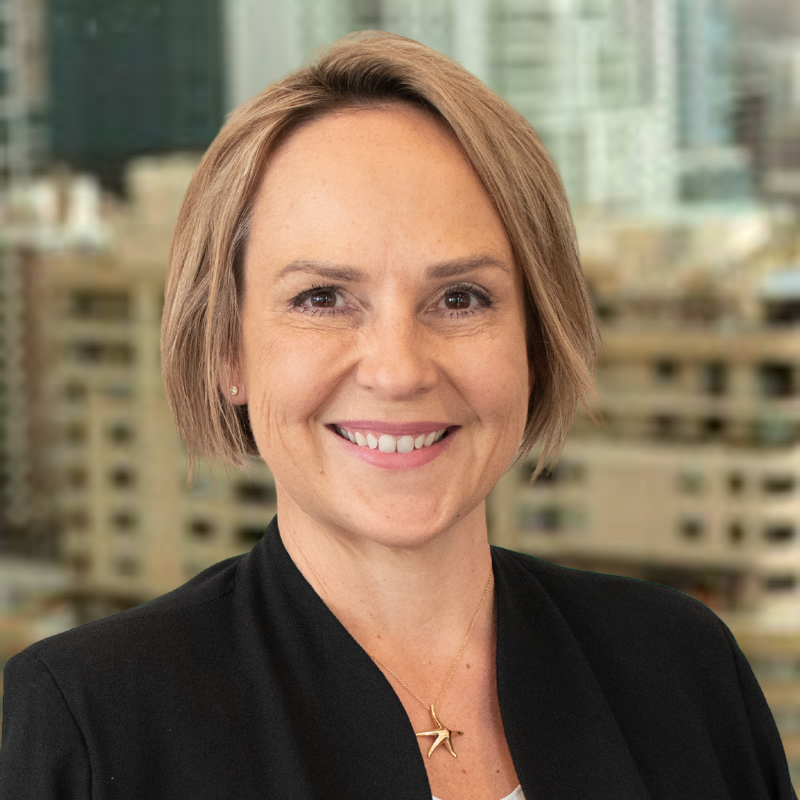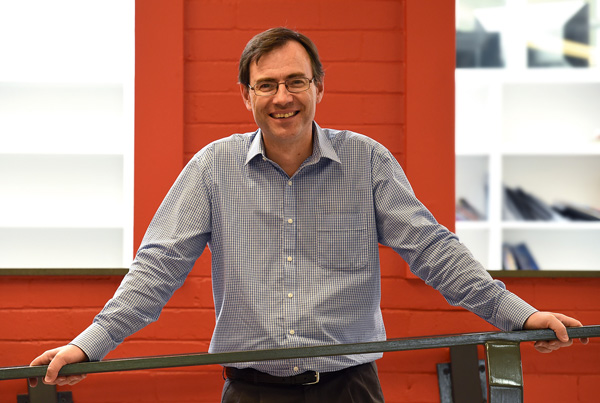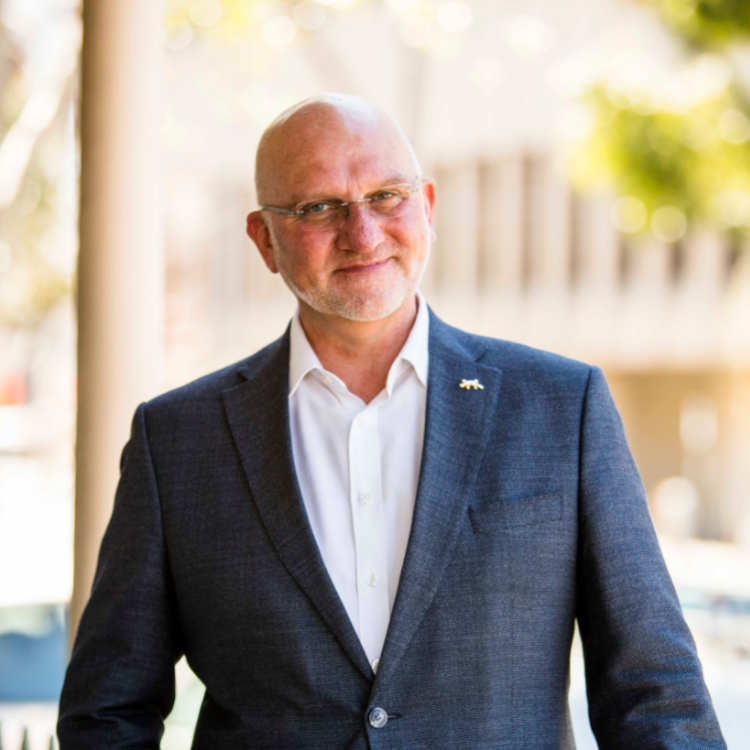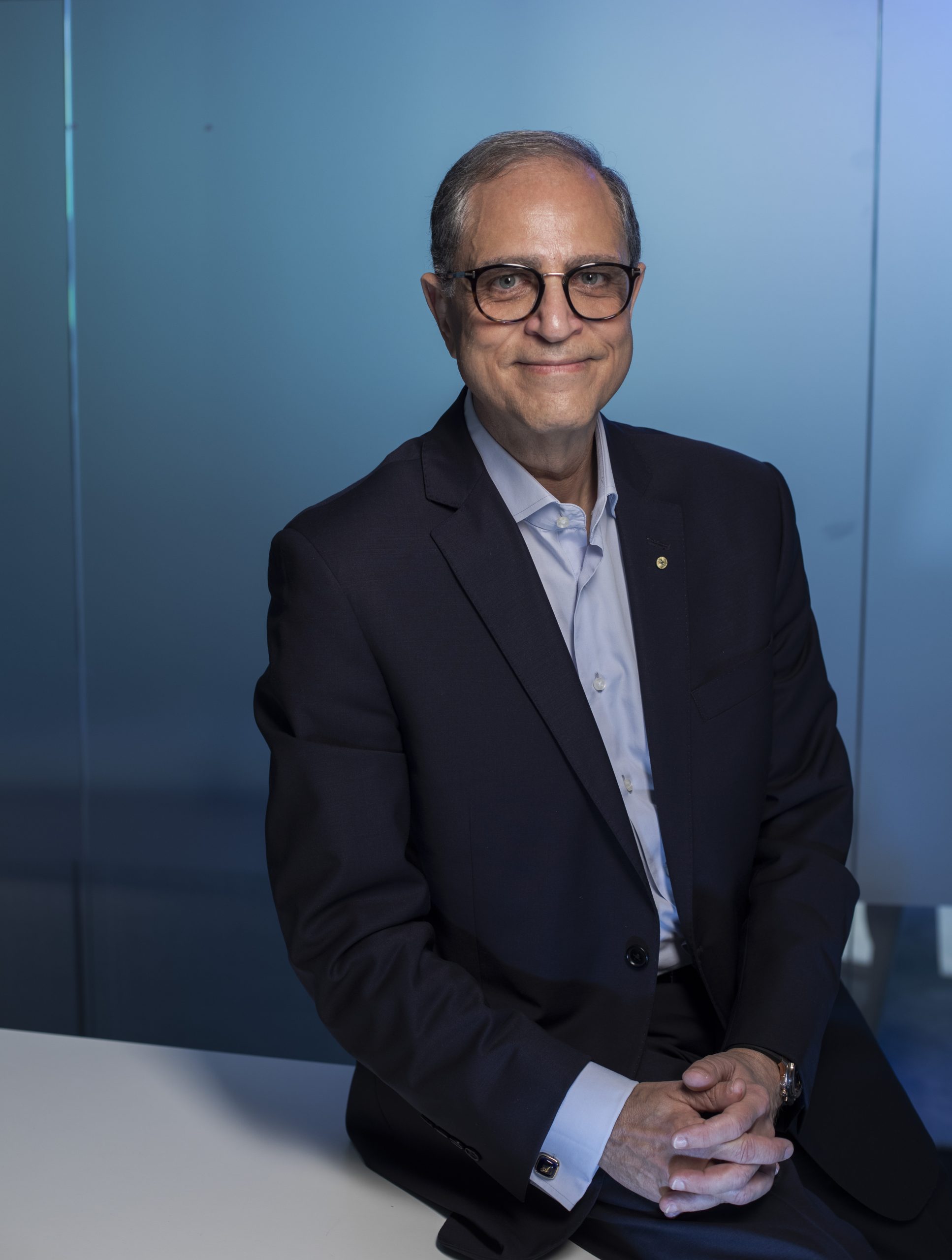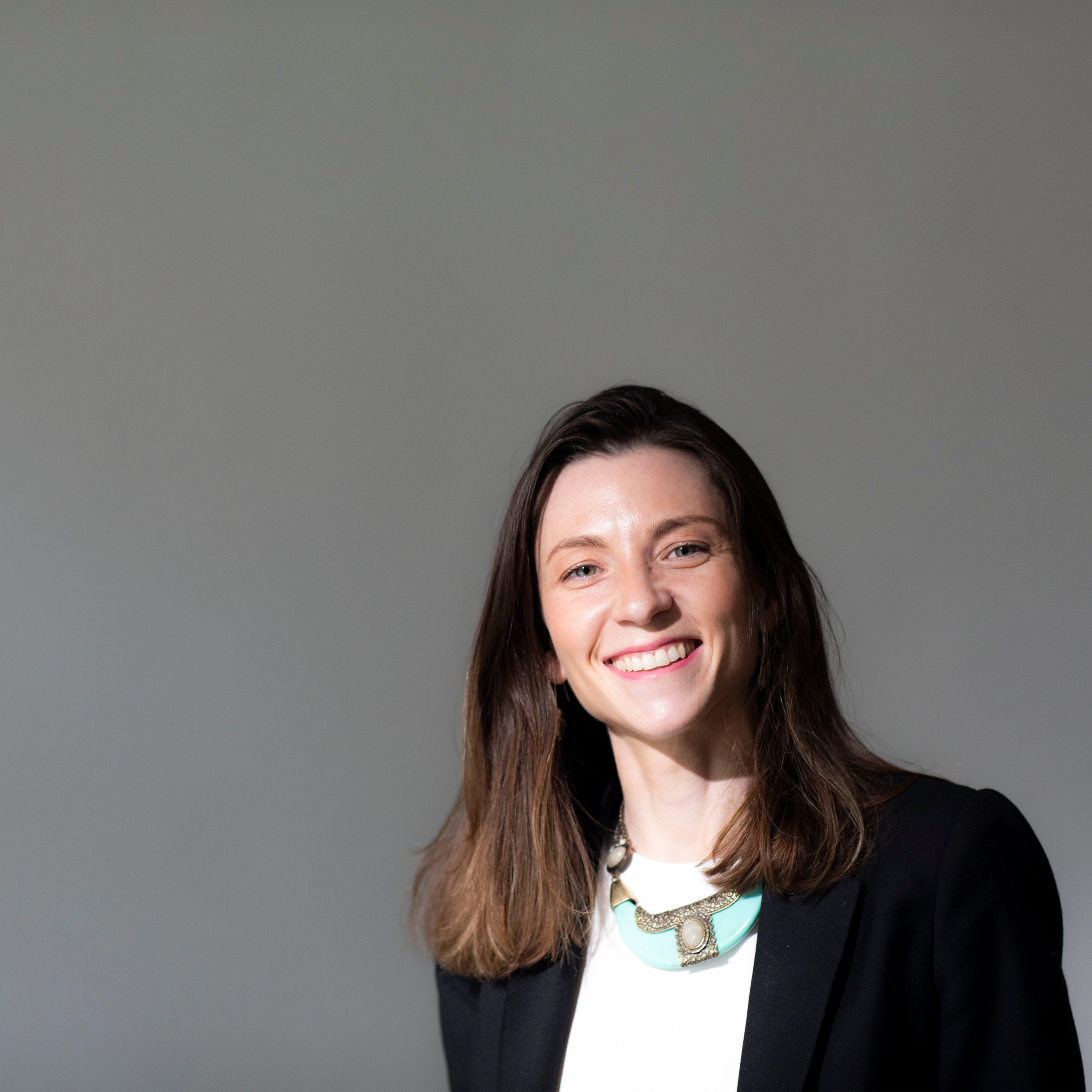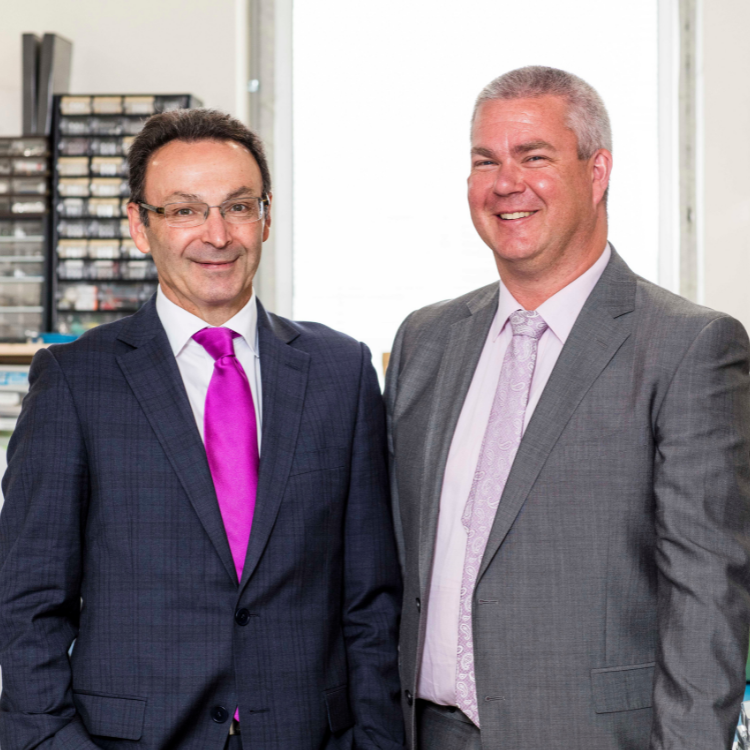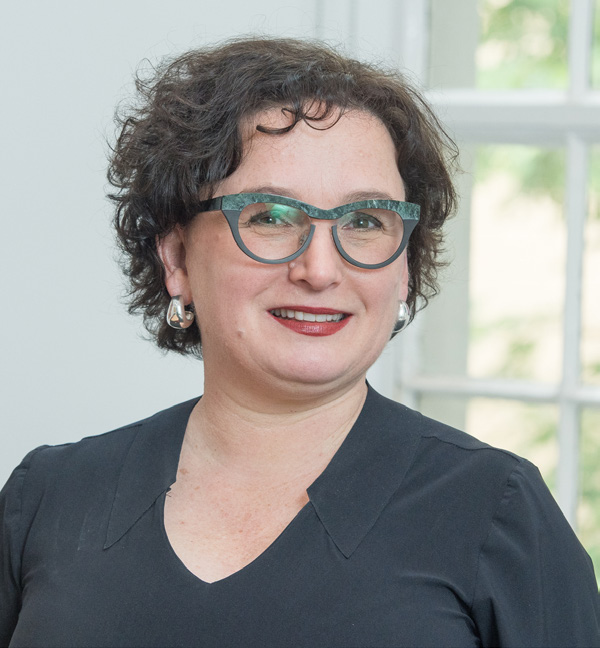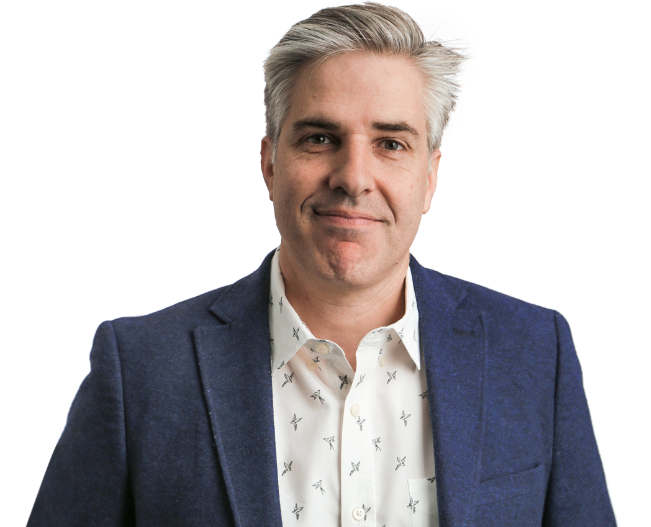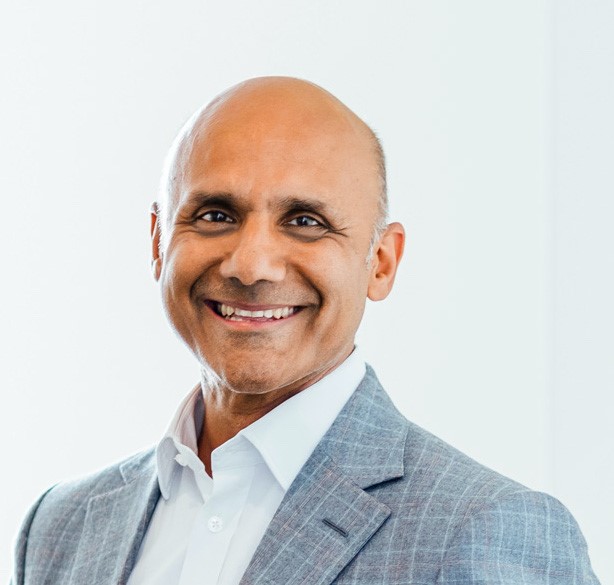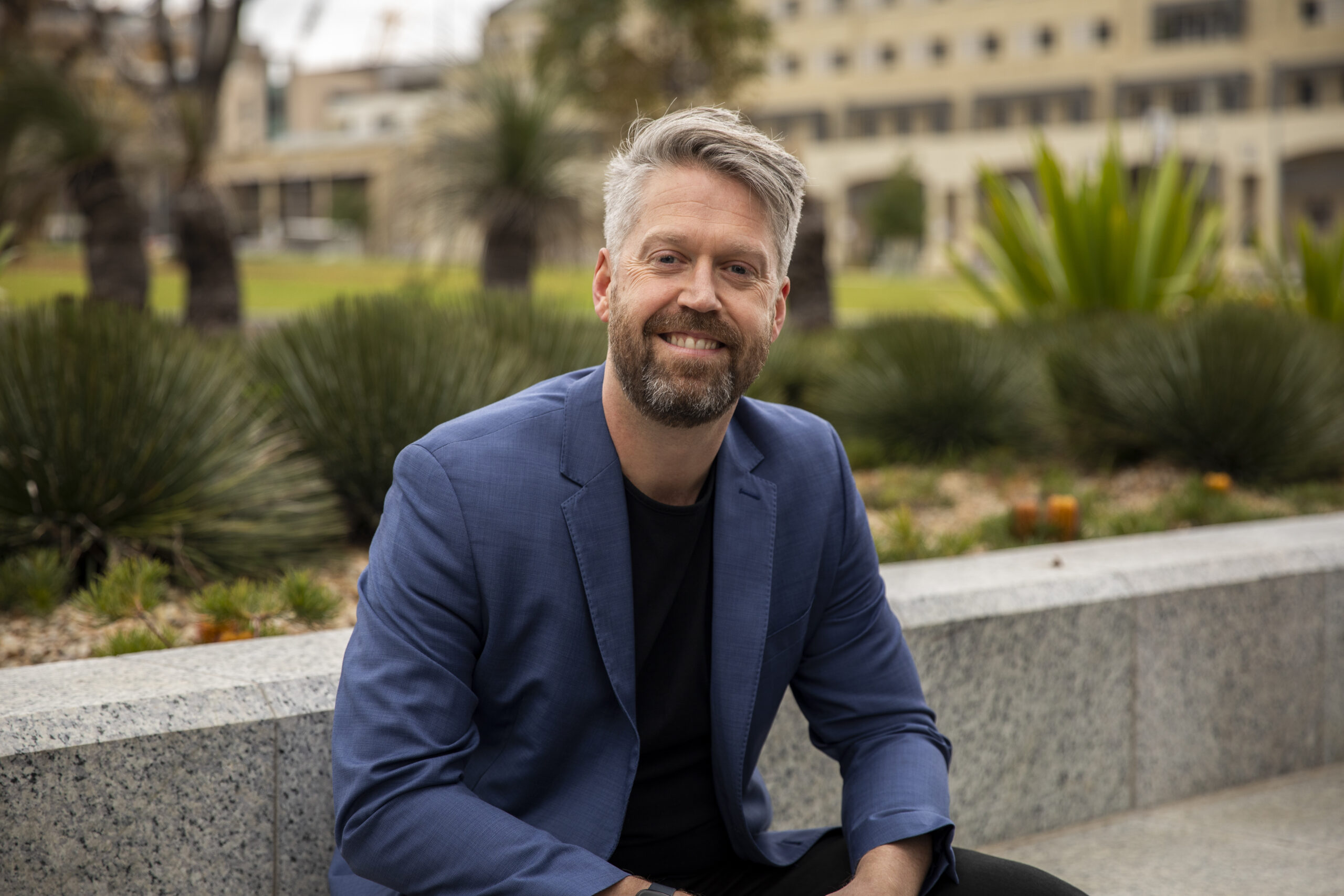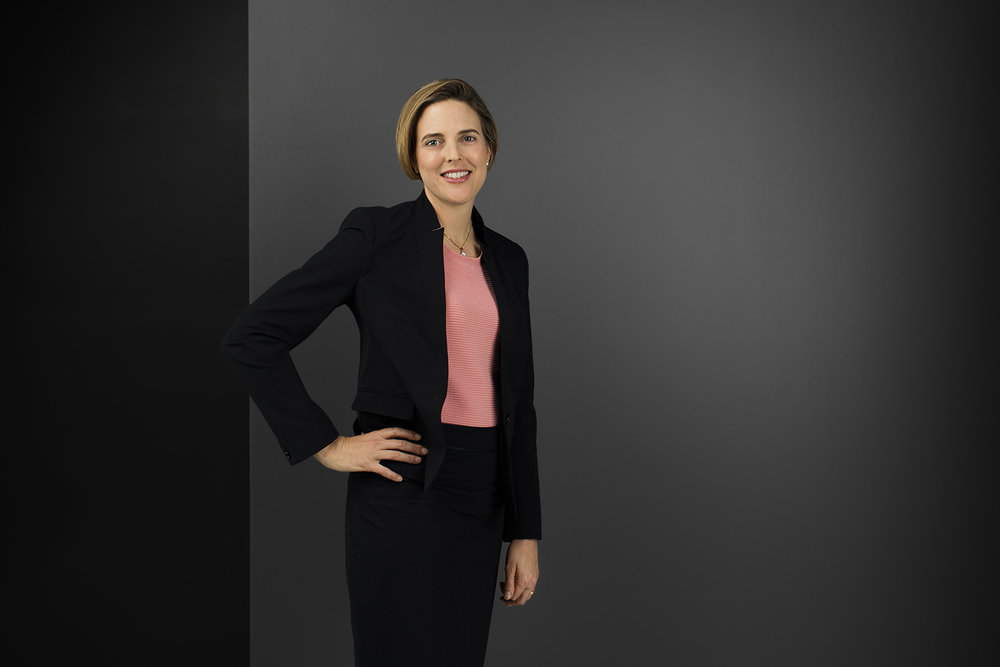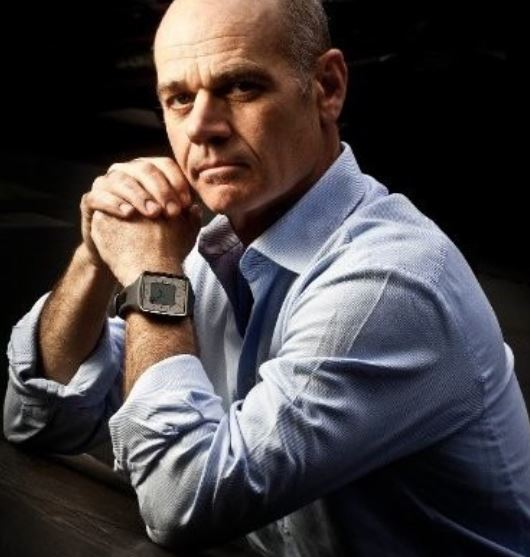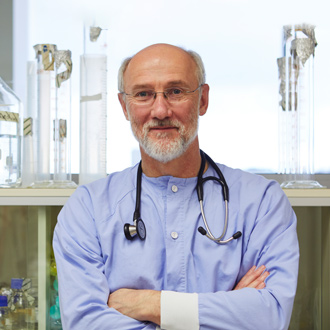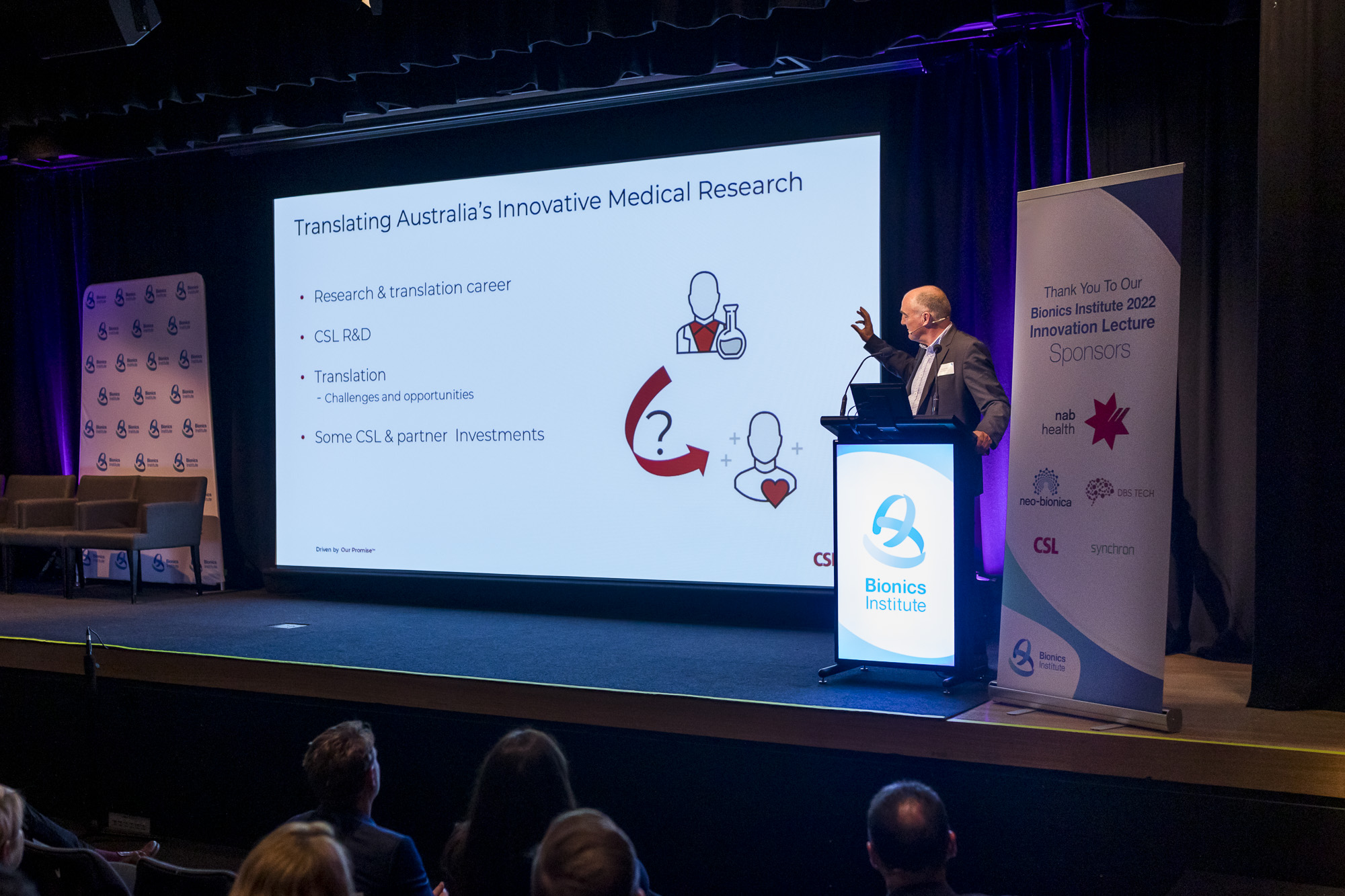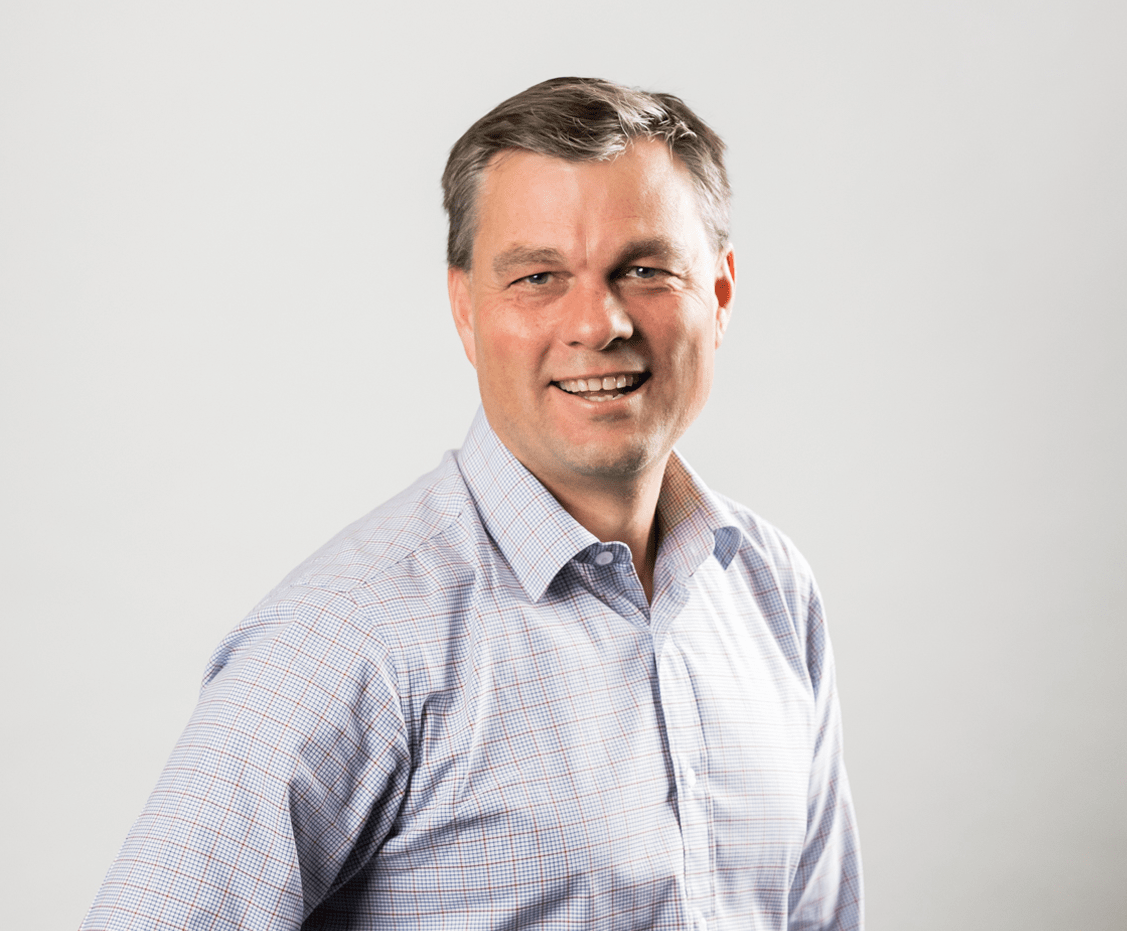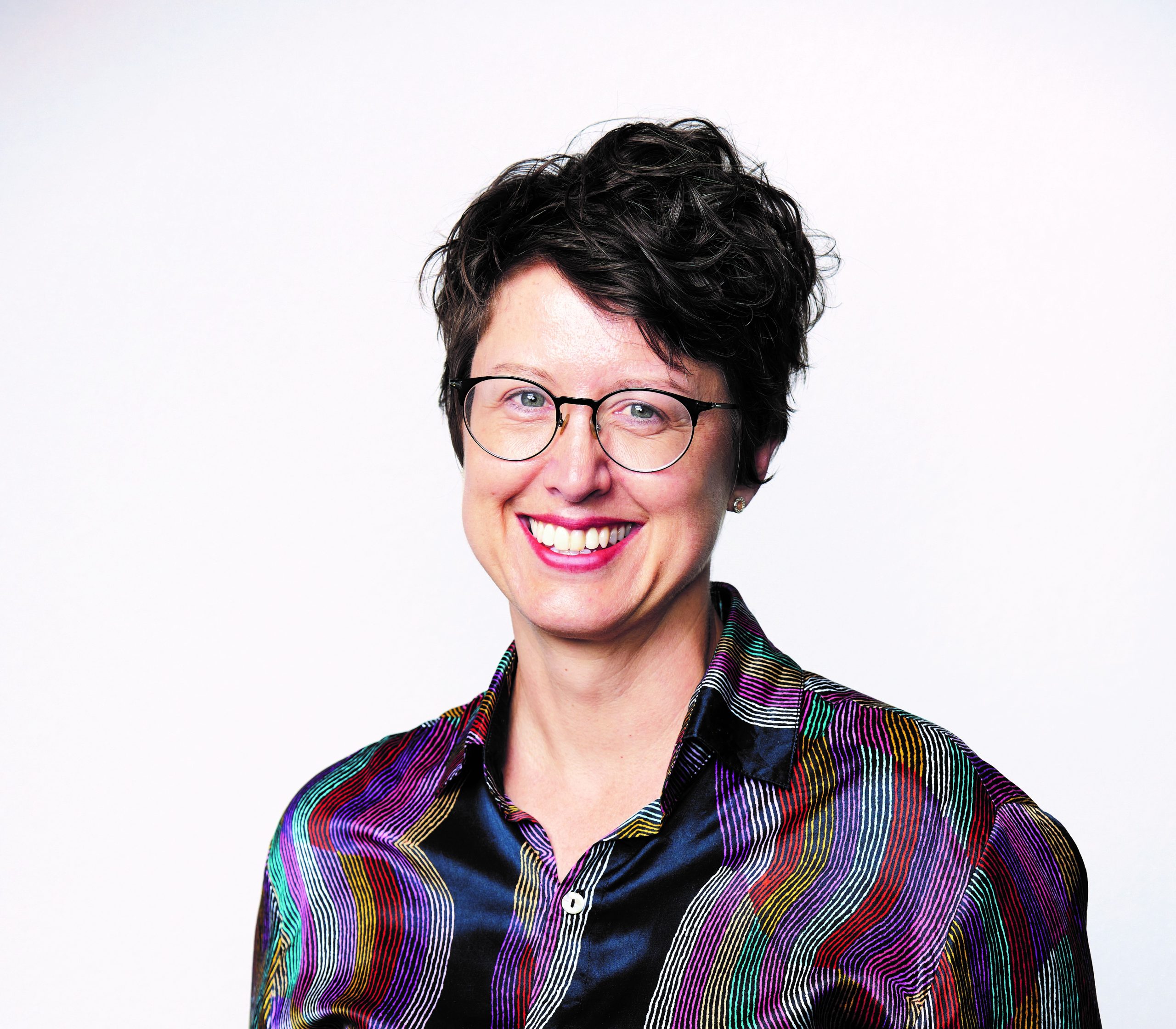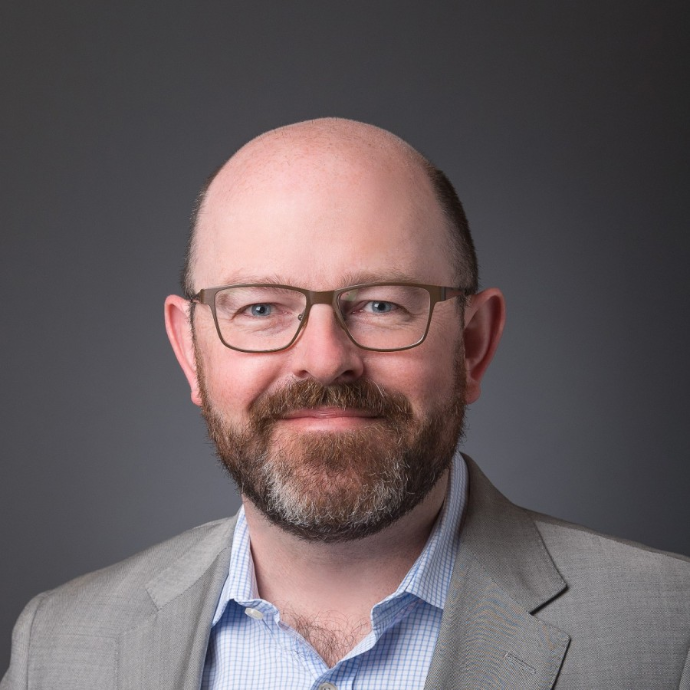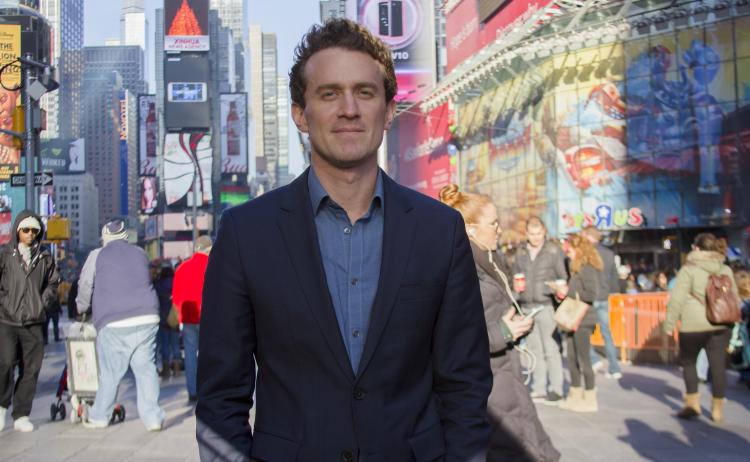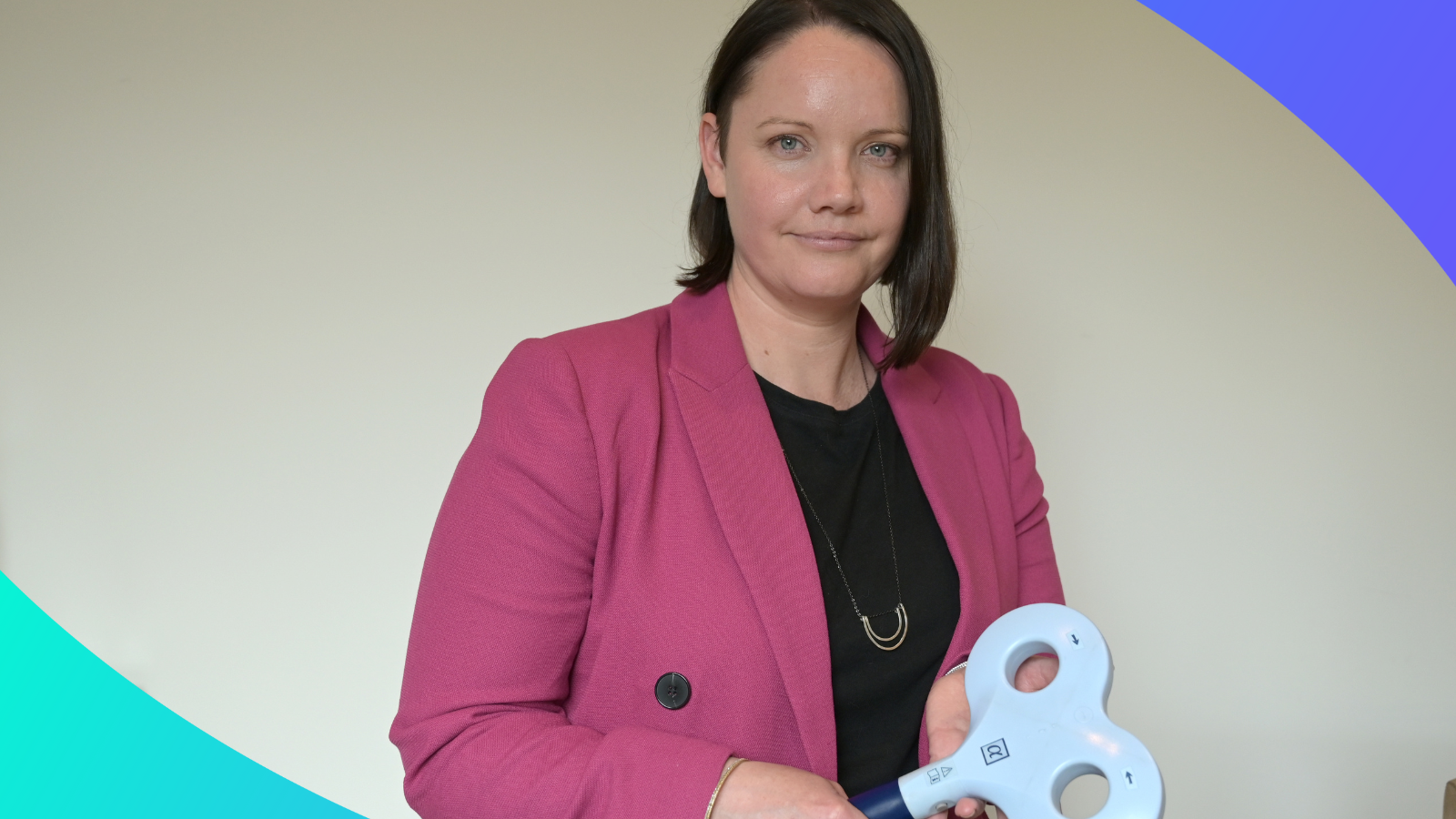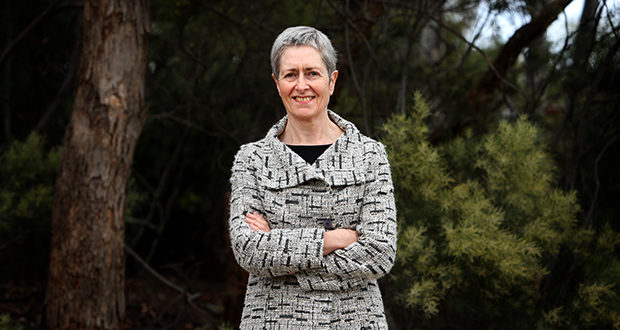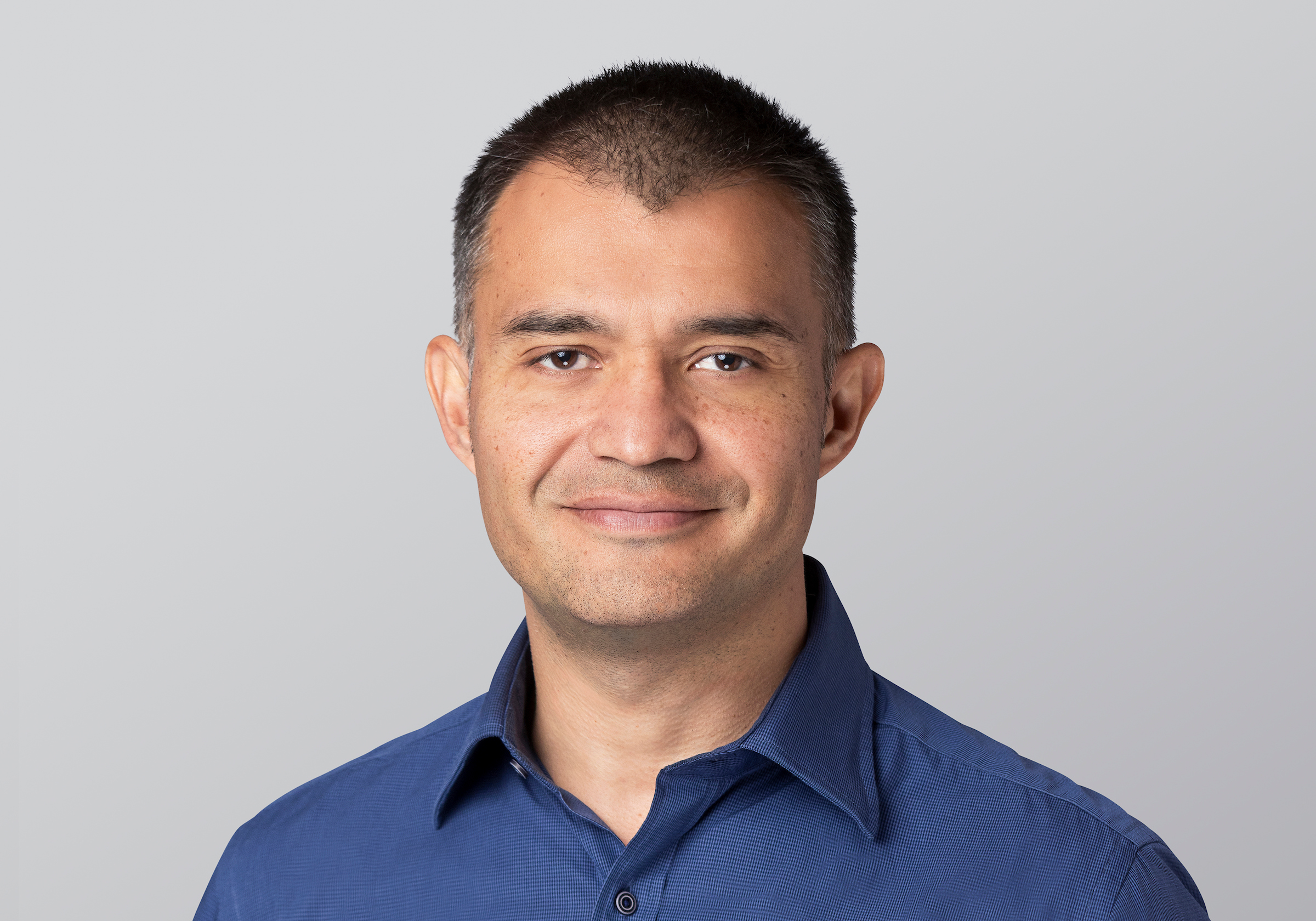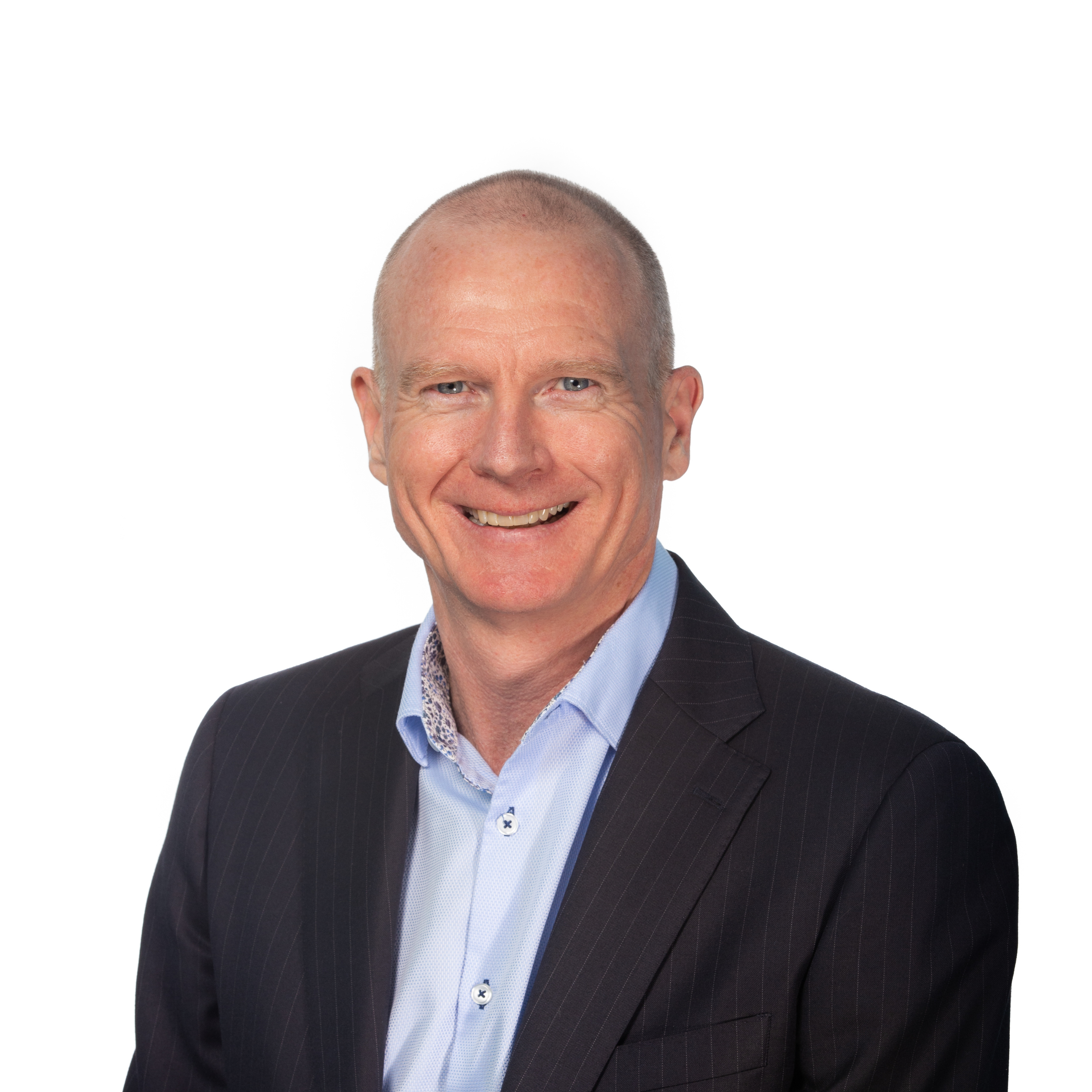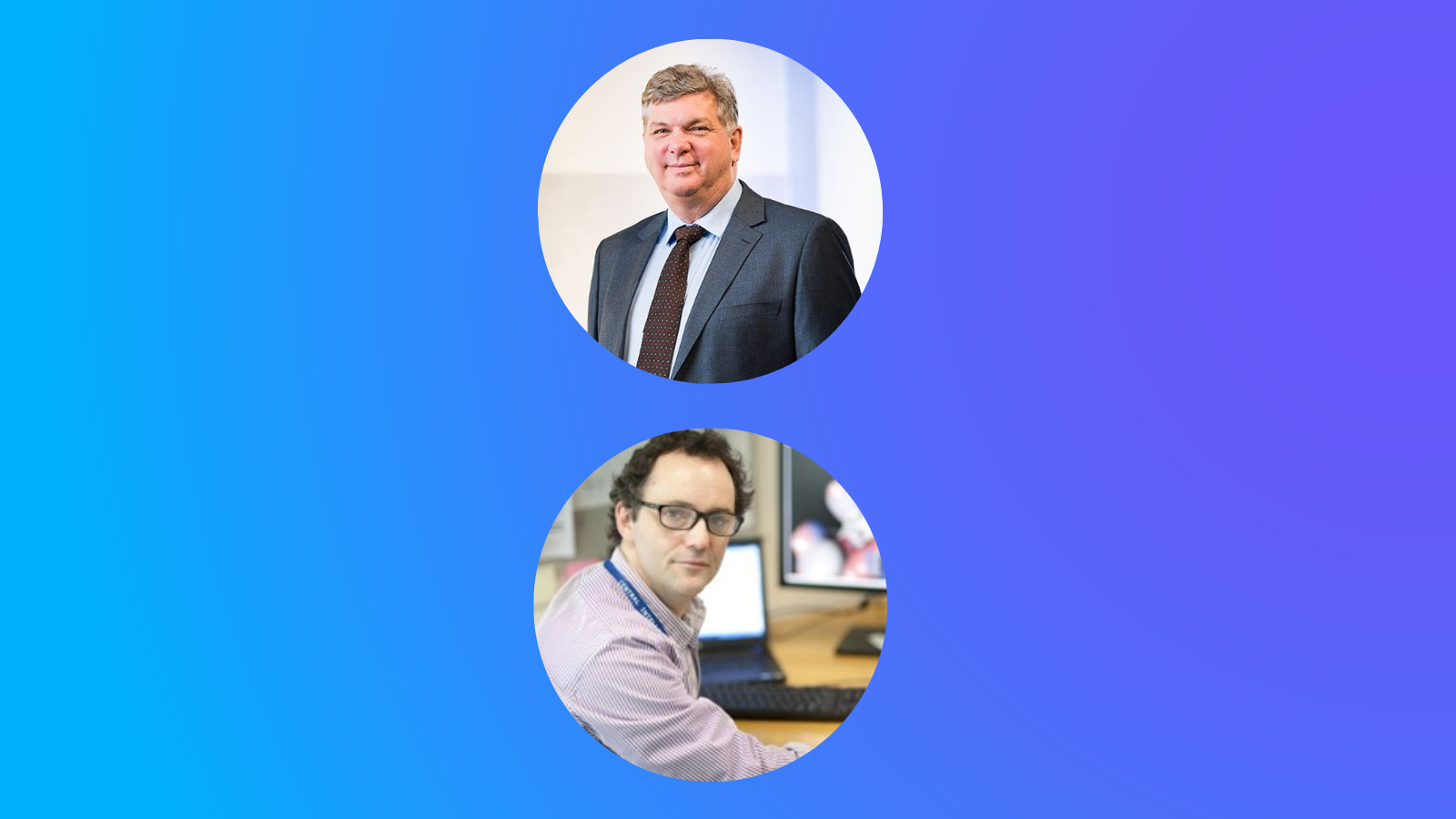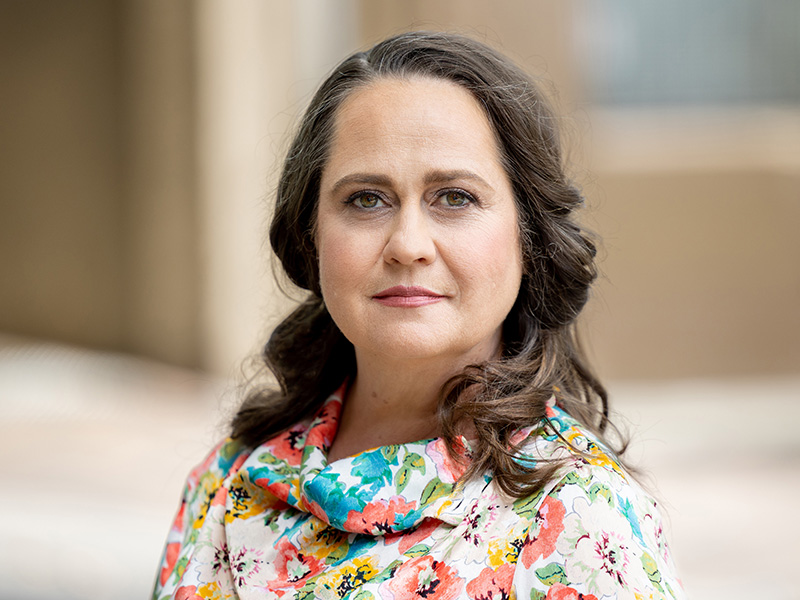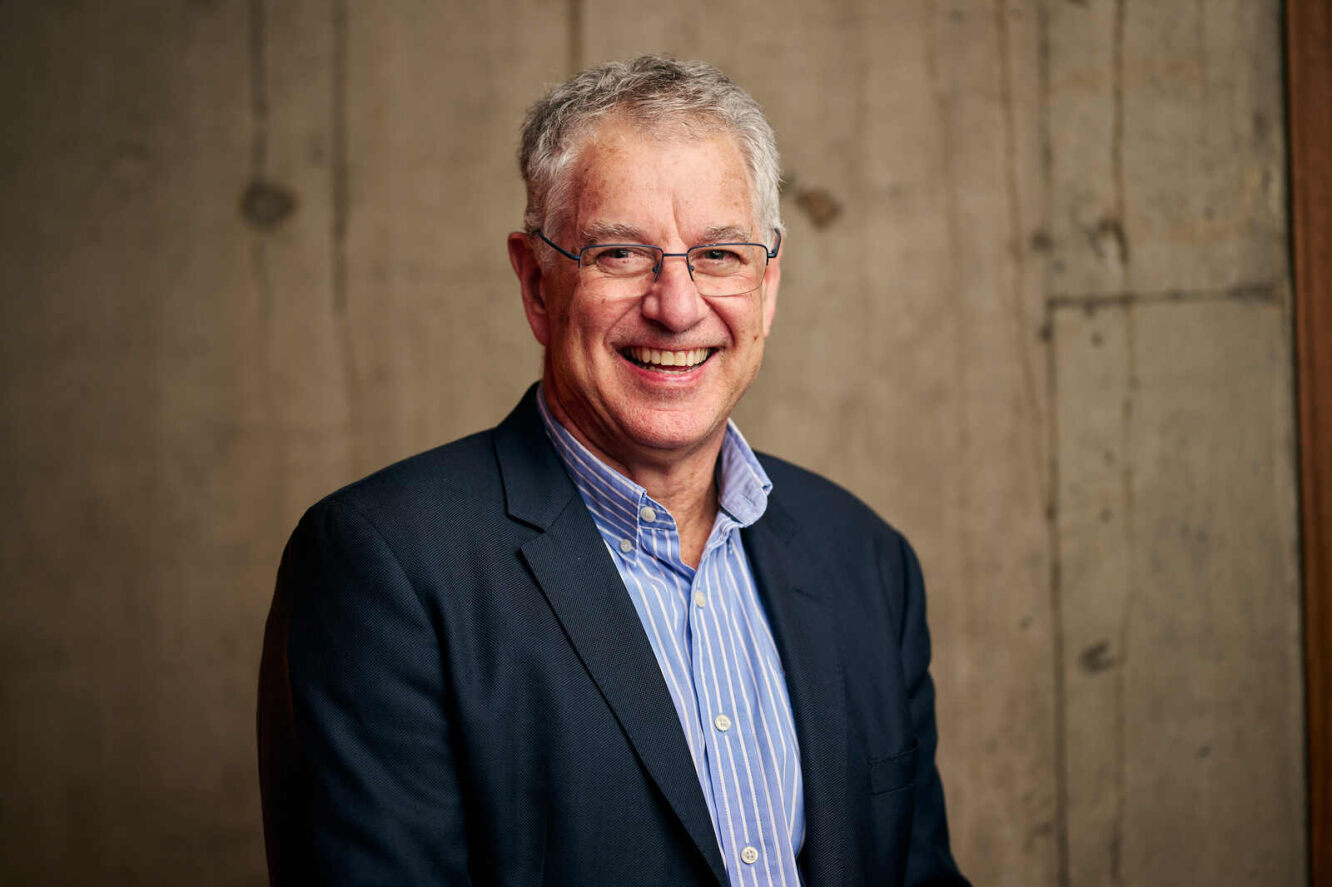Med Tech Talks
Pioneering a new treatment for Alzheimer’s with Professor Kate Hoy
Professor Hoy has built an internationally renowned program of clinical research investigating non-invasive brain stimulation. By stimulating key regions of the brain affected by Alzheimer’s disease, TMS offers the potential to restore healthy neural networks.
In this episode you will hear about:
More information:
Professor Hoy’s Alzheimer’s research is the focus of the Bionics Institute’s Christmas appeal. To support our research, visit our Alzheimer’s Christmas appeal.
Take a look at the Bionics Institute Alzheimer’s research page: A new treatment for Alzheimer’s
Learn more about Professor Kate Hoy: Professor Kate Hoy
Professor Kate Hoy [00:02:51] Thank you very much, Rob. It’s wonderful to be here.
Robert Klupacs [00:02:54] Kate, we’ve got a whole series of questions for you today and some have come from your colleagues as well. But first, just to start. You have developed a reputation as a leader in the brain stimulation field. But where did your interest in treating cognitive disorders and other conditions come from?
Professor Kate Hoy [00:03:11] So, I mean, if we’re going to go way back all the way to sort of high school, when I was trying to figure out what I wanted to do, I, I never really had a clear sort of vision that this is my career, this is what I want to be. And so in lieu of that, I really just tried to pursue the things that I enjoyed doing at school. So it was either going to be scientist or fictional writer that were the two two options for me. But I loved psychology. I’ve really even in high school, I really enjoyed trying to understand why people behave the way they do. But I also really enjoyed biology and chemistry. So I quite liked the the sciences on that side as well. I was at Open Day at Monash wandering around and I stumbled across a new degree that it was its first ever year and it was a Bachelor of Behavioral Neuroscience. There’s a little, little sign on the door and I followed all the little arrows too, to talk to someone about it. And I was hooked as soon as I got into that degree. Combined neuroscience and psychology. It was all about what happens when there’s an illness in the brain or an injury in the brain. And, you know, what are the cognitive effects of that? And so just in that process of studying that, I just got really hooked. And I’m still hooked all these years later.
Robert Klupacs [00:04:29] So you obviously had a passion in psychology later, this little course, but that still doesn’t quite explain how you finished up as a world class researcher, could it? You could have been a clinical psychologist.
Professor Kate Hoy [00:04:40] I could have. There are there are certainly a few a few more steps along the way. So I am at the end of the degree, I still wasn’t 100% sure if I wanted to do psychology or research. And so to hedge my bets, I did something called the Doctorate of Clinical Neuropsychology at Monash, and that was essentially a combined clinical and Ph.D. degree. So I still keep my options open right till the very end. I started working clinically as a neuropsychologist and pretty early on became quite frustrated at the fact that the patients that I would see, a few of whom would have Alzheimer’s, but also people who’d had traumatic brain injury, people were having cognitive symptoms from schizophrenia. There wasn’t really much we could do for them. We could assess their cognition, let them know what the issues were. Talk a little bit about what prognosis was likely to be, but kind of just stop talking at that point. Couldn’t offer them a treatment to improve their symptoms. I was frustrated by that and ultimately just thought it wasn’t it wasn’t really good enough. We had to be able to try and find a way to improve. And that’s kind of why I took a bit of a detour into the clinical research because I wanted to be part of developing treatments for my patients. The treatments I didn’t have then and still really don’t have now. Robert Klupacs [00:06:02] Yeah, well, you it’s interesting because I’ve followed your career for a long time, but you made that switch. You wanted to get into clinical research and then you joined forces with Professor Paul Fitzgerald. What was that about 20 years ago?
Professor Kate Hoy [00:06:12] It was yes. Paul was my honours supervisor and after that, one of my doctoral supervisors. And then I just hung around for about 20 years.
Robert Klupacs [00:06:23] So just for our listeners, so Paul Fitzgerald is a leading psychiatrist clinical research. Can you just tell us what you two created? Because I think that story there’s a lot more to get through. That story in itself is quite fascinating.
Professor Kate Hoy [00:06:35] Yes. So Paul Fitzgerald is a really a pioneer of brain stimulation in this country and internationally. So he started using transcranial magnetic stimulation when he was in Toronto very early in his career. And I and, you know, brought it back to Australia to investigate it as a treatment of depression for depression. And when he started doing it, it kind of people had done a little bit of research that didn’t think it worked and kind of put it on the wayside. But he thought there was something in it and continued to really pursue looking at different ways to deliver it. And can we can we get a treatment for depression? When I was a Ph.D. student, you always have to work part time sometimes too, to make ends meet. And so I started working on the clinical trials, and then over sort of the next ten, 15 years, we really were able to work together in a way that we were able to grow a really great team of people and expand the way that we did the research. So depression was always a really big part of it, but we also, you know, looked into other areas of using brain stimulation. And to treat things like chronic pain, other psychiatric illnesses. And then I really got focused into looking at their cognition and using this technology to treat cognitive disorders.
Robert Klupacs [00:07:57] Yeah, just to follow that up. So we you’ve chunk come to join us. You’re a world leader in TMS and we’re talking that up. And you’ve seen some great data which allows you to talk about in a moment. But just for our listeners, can you simply describe what trends magnetic cranial trends, cranial magnetic stimulation or team is actually is.
Professor Kate Hoy [00:08:18] Yes. So transcranial magnetic stimulation is a noninvasive form of brain stimulation. So it uses magnetic pulses which pass freely into the brain to induce an electrical current and that makes brain cells fire. Now, when we do that over and over again, and we can do that over and over again in a single session, and then we repeat sessions over days and weeks, we can actually induce lasting changes in the brain, not only specifically where we stimulate, but also in connected regions throughout the brain. It’s noninvasive, as I said, which means that patients are awake. There’s no surgery. There’s nothing implanted. We actually hold a figure of eight coil over the part of the brain that we of the scalp that we want to stimulate. And that’s essentially all or all that happens to the patient, though. The pulses, you can feel them. It’s like a tap on your head, but that’s essentially, essentially it. So too, as I said, noninvasive people can come, have a treatment and then they can go about the rest of their day.
Robert Klupacs [00:09:21] Is it possible that that can be done at home, or does it have to be done in a clinical setting?
Professor Kate Hoy [00:09:26] At the moment, it needs to be done in a clinical setting as a couple of reasons for that. Practical reasons in the first instance. So the capacities that you need to actually induce the magnetic field are relatively large, and so they need a clinical infrastructure, so a portable device. The other thing with teams is that there is a risk that it can induce a seizure. And the reason being that what we are doing is increasing brain activity. And essentially that is what a seizure fundamentally is. It’s a theoretical risk in that when you apply the stimulation within the safety parameters and you screen out people who have epilepsy or at a high risk of having a seizure, they don’t get seizures. It’s famous. So over the 20 years that I’ve been involved in the thousands of people that we’ve stimulated, we’ve never had a seizure because we very carefully screened and we applied within the safety parameters. But because of that, it is important that stimulation is provided in a in a setting where there are medically trained people who could respond if needed.
Robert Klupacs [00:10:32] This is a strange question, but I was telling my friends that you’re what you do and you came along and I said, That’s fantastic. But when I think about it, isn’t the magnetism already in the field, in the world, everywhere I go, what isn’t the general living of life and perhaps being closer to a magnet going to have an effect? And I think that’s correct. But a lot of us said I’m going to ask the experts.
Professor Kate Hoy [00:10:53] Yes, fair enough. So it’s it’s it’s an alternating magnetic field. So it’s a very, very focused, very, very strong field that is induced by an electrical current. So an electrical current comes through the coil. And perpendicular to that, we actually get a really strong, focused magnetic field. So it’s 2.2 Tesla, which is actually quite strong for magnetic field. And so the fact that it’s that strong of that focused is what allows us to actually change brain activity as opposed to the electromagnetic fields in the in the environment.
Robert Klupacs [00:11:27] So and apart from depression, where it’s been shown to have great clinical benefit, you’re working a number of areas where else this team has been used.
Professor Kate Hoy [00:11:41] So team is as, as we’ve said, is most most well used and approved clinically for depression. The other areas where there’s been quite a bit of work, ordinarily auditory hallucinations in schizophrenia there’s been quite a quite a bit of work there. Obsessive compulsive disorder and addiction. Right. And so there are various jurisdictions around the world where there are some levels of regulatory improvement for obsessive compulsive disorder and addiction. So there is certainly a lot of scope for full team is to really be a transformative treatment for brain based disorders. Robert Klupacs [00:12:23] Right. Just want to change tack a little bit. So, you know, in my career I’m getting old now, but when I when I joined the industry all those years ago, it was said, oh, we’ll in 20 years time, we’ll have a cure for Alzheimer’s disease. There’s been a huge amount of money spent by so many people around the world. And when I look at it, I don’t really think much has changed. From your perspective, you know, what is the future of treatment for cognitive disorders? Why do you think the current techniques haven’t achieved what we would have hoped to achieve? And why do you think your approach is going to give you a better outcome?
Professor Kate Hoy [00:12:59] Look, I think I think it is disappointing that there’s been so much research and so much money spent, and we haven’t seen effective treatments. To be fair, you never can predict what something’s going to, whether something’s going to work or not. You know, I think I think one of the issues people talk about is that 20 years ago or, you know, a decade ago, pharma went all in on n amyloid. They put, you know, all the cards on the table. And when you look at drug development and how long it takes to get a drug to the point where, you know, you can assess it in large scale trials, it’s safe for you to be able to do that. It takes time. And it took ten years or so. And unfortunately, what we saw was not the results that anyone wanted. So, you know, arguably was going all in on one idea, the right approach. And I think that’s what we’re seeing now. And really in even the last five years, people are really starting to look for different treatment targets, recognizing that certainly amyloids involved in Alzheimer’s. But we’ve seen a lot of studies now with amyloids removed that we don’t see the cognitive improvement that you’re expecting. And so people are looking for different targets. And the research, I think, is getting more diverse, which is what we were missing. I think that if we’d done that 20 years ago, perhaps we would have been in a different situation. Now what we’re looking at is dysfunctional connectivity in the brain. So we know that cognition in the brain is actually not. You know, we used to think there was a bit of the brain that did math and there was a bit of the brain that did, you know, decision making. We know now that’s not that’s not how it works. It’s a it’s a network system. So cognition is actually represented by activity that flows and that is communicated through at these large scale networks in the brain. It’s dynamic and it needs to be dynamic because it’s constantly dealing with external and internal inputs. So we need like a really responsive, connected brain essentially to to deal with with our lives. In Alzheimer’s. we know that when disease proteins like amyloid and tau clump and accumulate, they do so in and around neurons or brain cells. And one of the things that does is actually damages the way or changes the way they fire and changes the way they connected. And over time, as that happens, you get this this connectivity. So that lovely connection and the way the brain work that I talked about, you don’t get that in Alzheimer’s. What we’re trying to do with brain stimulation is actually come in and restore that, get those neurons firing again and get those connections going. Because arguably, if you remove amyloid, that damage that’s been done to the connectivity still there so you can remove it. You may not necessarily have the impact on cognition that you’re hoping for because. Amyloid itself is not necessarily what’s causing the cognitive actual symptoms.
Robert Klupacs [00:16:07] So a combination of that and some level of neuroplasticity treatment coming in to get the right connections after removing amyloid. Is that that’s something that’s being explored at the moment?
Professor Kate Hoy [00:16:18] No, but I mean, the idea certainly is for me, that is that is the comprehensive treatment is to remove the amyloid and then come in and restore the connectivity, the damage that was done. You know, we’re only just starting to see sort of the treatments that are targeting connectivity. And so, you know, you think 20 years ago when we started amyloid, we probably only about five years into looking at tamest food for Alzheimer’s. Luckily, the great thing about team is, is that it has been studied for 30 years and we know how it works and we know its safety profile and it’s very safe, very few side effects. You get a little bit of a headache and you can get discomfort where the stimulation occurs, but that’s kind of it. You’re not affecting any other part of the body. You’re just targeting directly the brain activity you want to change. So yes, we are relatively new, but we’ve also got a really big head start because of everything that came before us, particularly with the Depression work.
Robert Klupacs [00:17:16] One question I’ve always wanted to ask. So when you’re treating Alzheimer’s in the measures and people say it’s cognitive function, but isn’t it primarily memory? And then the follow on that, my friends ask me, So Rob, that’s the case in years team is to improve memory. If you’re a healthy person you get to miss, can you become smarter?
Professor Kate Hoy [00:17:35] It’s a really good question and a lot of work. early on, people were super interested in cognitive enhancement. So I make a really big distinction between cognitive treatment, which is where you’re training someone whose cognition is impaired in some way, and cognitive enhancement, which is where you’re healthy cognition, but you want to get better. I did a lot of work at these actually early on in my career and we so I did quite a bit of research looking at whether we could do that in healthy controls. And I think you can disagree with me, but I think I think fundamentally what happens is that there is a ceiling effect. Our brains are very good at keeping itself within like homeostasis within its limits. You can get a little bit better. You can kind of I don’t know if you do better than what you get with a cup of coffee in the morning. But you can you can push it a little bit bit, but the brain will kind of push back a little bit and keep itself healthy, keep itself within its optimum. So what we’re doing in illness is very different. We trying to actually it’s not a brain that needs in her mistakes. We’re trying to to get it back there. So it’s a different effect. But that was a question that people were very excited about and research for a good decade before. I think people have been like.
Robert Klupacs [00:18:48] My answer was, yes, I need it.
Professor Kate Hoy [00:18:50] So yeah, I know. Well, we had the devices and we’re like, well, if it works, we’ve got them, you know, pop them on and have a particularly good work day.
Robert Klupacs [00:18:59] Just, just back to where we talk about development of treatments, part of that part of the issue is Alzheimer’s and dementia is a gradually deteriorating disease. And obviously, like any condition, the early you can get in, the more effect you can have. I know the FDA part of the issue that we know is the FDA said we need to improve people at a certain level, otherwise we’re not going to approve the drugs. And so the dilemma is, you know, when do you start treatment for anything? Because of the my observation, you love to get your input. A lot of people have got cognitive decline that doesn’t show for 3 to 4 years. The once it starts, it starts to accelerate. How do you find the best people to work on so that you are going to get a benefit? And is it is it possible that if I genetically I’m probably predisposed to become very bad with dementia, could you find late stage dementia patients responding to your type of therapy?
Professor Kate Hoy [00:19:55] It’s a really good question. So you’re absolutely right that the early intervention is is the best way to go and the most important thing to do. It’s tricky with Alzheimer’s because diagnosis is still challenging. So we know that. There were brain changes, sometimes a decade before a diagnosis and often preceding the cognitive symptoms. Ideally, we’d love to get people at that point, but unless we’re giving people brain scans every other week, it’s very, very difficult. I think practically what we probably want to ultimately do is develop these treatments for what we call mild cognitive impairment as a as a preventer. So mild cognitive impairment is cognitive decline that occurs with age that doesn’t have a functional impact. So you’re still able to do everything you could always do. But you do notice a decline from your previous level of cognitive functioning. That doesn’t mean you’re going to develop dementia at all. Sometimes it can resolve and get better, but it is a risk factor for dementia and Alzheimer’s. So if we can take those people and try to restore the brain function in that group, then I think that would be ultimately, you know, a really positive, positive move with these treatments on the other side. So that, you know, we’re predominantly looking at people with mild to moderate Alzheimer’s, severe Alzheimer’s, which would be at the at the later stages. I, I it is something that I would not rule out looking at because I think everyone deserves to have a chance at this treatment. It would just be how much of so the brain atrophies with with Alzheimer’s over time. So we just need to make sure there’s enough brain and neuronal function for us to harness and sort of get moving. But I come from the the depression feeling where we only traded treatment resistant depression with tameness. So it was only the people who weren’t able to get relief from anything else. And so our whole ethos really is like, it’s never too late. It’s never, no, you’ve tried everything, it’s too far. And your illness never that everyone deserves to be able to have access to these innovative treatments. If we have a good faith belief that they could work for them.
Robert Klupacs [00:22:20] You know, we were excited to recruit you to do exactly that. So I just want to change tack a little bit. One thing I’ve noticed in our relatively short time together is that you are a very, very good communicator of science. More perspective. Why is science communication so important? And what advice would you give to other researchers when it comes to communication of their work, particularly when they present not just to grant bodies but to the general public? Venture capital investors, superannuation funds.
Professor Kate Hoy [00:22:51] Yeah. Well, thank you very much for that. I wasn’t certainly wasn’t always comfortable with science communication, but it was something that I worked at really hard for through my career because I wanted to get better at it. And the reason I wanted to get better at it was because it’s so important. It’s important for us to communicate our science. We’re not in a lab doing research just to talk to other scientists. The more that people in the public understand the scientific process and the innovations that we’re working on, I think the better it is for everybody. And also fundamentally, we’re funded by the public in a lot of ways. So the the National Health and Medical Research Council and the Australian Research Council, where a lot of grants come from, that’s public funding. So I think we have a responsibility to talk to the public about about what we’re doing. So science communication, I think is really important. My advice is to adapt to your audience. So you’re not going to always talk in the exact same way. So you need to sort of know who your audience is, get to know where they’re coming from, what they want to know, what they want to hear and and adapt. The other thing I would say is that always prepare and practice. I would never do a wing it with science communication. Sometimes you don’t have a lot of time. Sometimes, you know, it’s a quick radio interview, but even then just jot down a couple of notes the key things you want to get across and then just work off that and as a base.
Robert Klupacs [00:24:20] Say the part of the thing is you talk to the general public and you love them to really know why you’re doing it, but you really don’t have time. So how do you bridge that gap where you don’t want to keep glib sentences and you want them to understand it? But you know, if you start talking about detail, you’re going to lose them. What’s the how do you overcome that?
Professor Kate Hoy [00:24:38] So that’s a really good question. So the first thing is you have to know your science inside and out to be able to simplify your science. And whenever you hear someone talking about complicated areas of science in a way that you understand, to me that means that they know it inside and out. So getting a really good understanding of your field and things like that is is critically important to explain it simply. I think the other thing you’ve got to be really mindful of is the fact that. How people might misconstrue you is really important and look, in the Alzheimer’s field in particular, I my concerns very much are around accidentally giving false hope. So I’m very, very careful about how I describe when we’re researching a treatment or when we’re hopeful that this will work, or we’ve seen positive signs but been really, really careful not to give, as I said, false hope or anything that people might accidentally misconstrue. And, you know, that’s from being accidentally misconstrued in the past because it’s happened and then you learn from it and you get better at it. Most people won’t be great it at the beginning. They’ll make mistakes and they’ll read a newspaper article where they’ve been interviewed and be mortified, as I was many times. But trust me, it gets better. And it is just practice.
Robert Klupacs [00:26:05] Just coming to the end. But I’ve got two questions and one, I want to sort of come back a bit. So in this whole field of personalized medicine, you know, we’ve seen cancer with the BRACA genes, and that’s people getting genetically screened and doing things to themselves as a preemptive based on a genetic marker which may or may not be true. There’s been lots of discussion about is there a genetic predisposition to cognitive decline and people been talking about, you know, screening through your genome APOE4 mutations. What’s your view about that? Do you think that holds up that the cause and effect of genetics is actually really close? And secondly, if that was the case and is the case, what would you recommend to people who are at risk?
Professor Kate Hoy [00:26:50] Wow. That’s a big question. It’s an important question, though. So. The genetic risk conveys just that risk. So it doesn’t convey that you’re going to get an illness. It conveys that you might be at greater risk than other people. So yes, the APOE, there’s been quite a lot of research around that and that seems to to yes. Hold up that certain combination of alleles which you inherit from your parents can certainly convey more risk than others. There are some forms of dementia where particularly some early onset, where there are genetic mutations that are actually quite closely linked. And so, you know, they convey a much higher level of risk. My advice to people who are thinking about this is that I would strongly advise them to get genetic counseling before they did any tests. And I think, you know, most places would require you to do that. It’s really important to understand what the results would mean for you. What you can do about it and what you can do about it. And to weigh all that up before you make your decision about whether you find out or not. I think it’s a personal decision. I think that people have absolutely have the right to their medical information and information about their genetics. I think that’s really important. But I think it’s our responsibility as scientists and and people who’ve been studying it to really let them know everything that they need to know to make that decision. You know, what would you change if he knew? I think he’s a pretty big question. If he knew. What would you do different? Because there are there are modifiable risk factors that people that we encourage people to do. And it’s they know they’re good for you anyway. So exercise eat well, you know, make sure your hearing is is as good as it can be. It’s a huge risk factor for dementia. And if you need hearing aids, get hearing aids, get them well fitted, make sure they’re there, they’re working for you. Would you change would you not do any of those things or would you start doing any of those things based on a genetic risk? I think that’s the question that I would consider.
Robert Klupacs [00:28:59] Yeah. And then just following up on the risk question, you know, we’re joined in this post today by next AFL footballer, but the whole field of concussion and concussive injury. Which frankly, people don’t see through to late and maybe one hits too much. If you think of CTE or even everyone who’s played some type of contact sport have had a brain and minimal brain injury. Who knows what’s going to happen? Could could you foresee a scenario where everyone playing sports should just get a dose of TMS early on as a protrctive because I saw a documentary the other night with an ex rugby league player, which is tragic and it was the interview between him and his neurologist and the neurologist said basically what he has is the brain of an Alzheimer’s patient. Light stage. And that’s what he had. And that’s how he reacted. You know, he they showed all the hits that he got over time. But it’s a cumulative thing. And it sounds not dissimilar to what dementia is. If we know we want to get in early to get the best effect and there’s so many people doing concussive events through body contact, is there is this an area that perhaps we should be thinking about getting ahead of the curve with something like this?
Professor Kate Hoy [00:30:12] Look, it it is a big problem. And I, I recently had a PhD student finish it. We did a longitudinal study looking at brain changes in people who’ve had concussion. And so she saw people for weeks after the concussion with a head injury 12 weeks and three months to to track the changes in the brain. And, I mean, I think what what came from that was that there’s a lot of ways and a lot of things that can happen at the brain that can damage it. And, you know, with the endpoint in a lot of things been this creation of dysfunctional connectivity and cognitive changes. So we know when someone has a head injury, there’s a couple of things that happens. There’s a near amid a bullet cascade which can really disrupt excitation and inhibition in the balance. And you can get, you know, a toxic level of excitation, but you also get the physical shifting of the brain in the skull and, you know, you can get tearing of if structural connections as well. TMS is preventative. The preventative is not getting a head injury, which and I know that that sounds flippant, but you know, we can give people TMS, but then if they have these injuries that have really, you know, damaging the structure and function of the brain, it I mean, I think me this is a treatment for some of these things or some other types of brain stimulation is a real possibility. My preference, and I think probably the preference of a lot of people these days is. Just to avoid avoid repeated head injuries as much as possible and to avoid repeated head injuries in a short period of time, you have to let the brain heal as much as it possibly can. And you know and I think you’re right, the AFL situation is worrying to to see and it’s horrible to see when you’re watching a game and you see something like that happen. They do have excellent medical care. You also worry about the amateur footballers, the footballers just around the country every Saturday and Sunday playing and, you know, who are also having these head knocks and maybe don’t have that immediate.
Robert Klupacs [00:32:27] And I think it’s wrong. It’s also at the elite levels. You know, they’ve got great medical care because most people are at the elite levels. Yeah. And they just want to play.
Professor Kate Hoy [00:32:36] Exactly.
Robert Klupacs [00:32:37] And you know, you just get and you won’t see those effects for a long period of time. This is a much bigger debate. We don’t have a lot of time. But I just think perhaps, you know, over time your approach, perhaps we should put that into debate as well. Hmm. But we’ll come back to that.
Professor Kate Hoy [00:32:51] Yeah, absolutely.
Robert Klupacs [00:32:52] Two last questions. You’ve joined us with words got out that there’s a clinical trial about to happen again. If anyone’s interested. Can you just give us the timelines about when you want to start the trial and the type of people you’re looking to recruit into that trial?
Professor Kate Hoy [00:33:10] Yeah, absolutely. So we’re hoping to start the trial in the first half of next year. And so we’re in the in the process now of developing that and putting everything together to allow us to to begin. Then we’ll be looking for people with mild to moderate Alzheimer’s. And we have, like any clinical trial inclusion and exclusion criteria to just make sure that it is safe and appropriate for the person to to to be able to have the treatment and have all the procedures that are part of the trial. We will be putting a expression of interest form up on the Bionics website and we can probably add that to the link for the podcast, I would imagine. And so if people are interested in hearing about it, once we’re up and running, they can just pop their details in and we’ll contact them.
Robert Klupacs [00:33:56] Fantastic. Do you need to have the gerontologist or the neurologist also approach you or can they come directly to you?
Professor Kate Hoy [00:34:03] They can come directly to us, but we will then sort of reach out to their treating clinician, because we’ll always do this in combination with their with their treating clinicians. So we will we will with the participant, reach out to them to get the information we need.
Robert Klupacs [00:34:18] Fantastic. Last question. Every year, at the Bionics Institute,we have a Christmas appeal where we ask our wonderful supporters to find loose change and give to the Bionics Institute to make a difference for people’s lives? This year, our Christmas appeal centers on your research. Is there anything you would say as a last comment about your research about why it’s important for the general public to support you?
Professor Kate Hoy [00:34:44] And well, look, firstly, thank you so much for the generosity of donors. And, you know, that’s actually the only reason I’ve ever been able to pursue this idea. You know, back when I started, it was a very novel and different idea. And the only reason I was able to start was because of philanthropic funding and people who were generous enough to donate what they could. What I would say would be any amount actually does make a difference. And so we appreciate what anything anyone can do because every every little bit of it actually makes a difference for whether or not we can get people in and help them to to support them through the trial. So it is important. You know, we are really hopeful that this could be a transformative treatment for Alzheimer’s. And we’re really excited to get the trial going and.
Robert Klupacs [00:35:39] Fantastic, Kate. We’ve reached the end of our podcast today, and I thank you so much for sharing your incredible research with us and again, to tell you how how delighted we are that you’re here with us. We are incredibly honored. Delighted to have you on board. I can’t wait to see the results of the trial in the translation of that trial into hopefully treatments for people with Alzheimer’s disease. To our listeners, I hope you enjoy listening and I look forward to introducing you to future guests in future podcasts. There are links to everything we talked about in the show notes and we look forward to welcoming you next time.
Listen to other episodes of Med Tech Talks here

